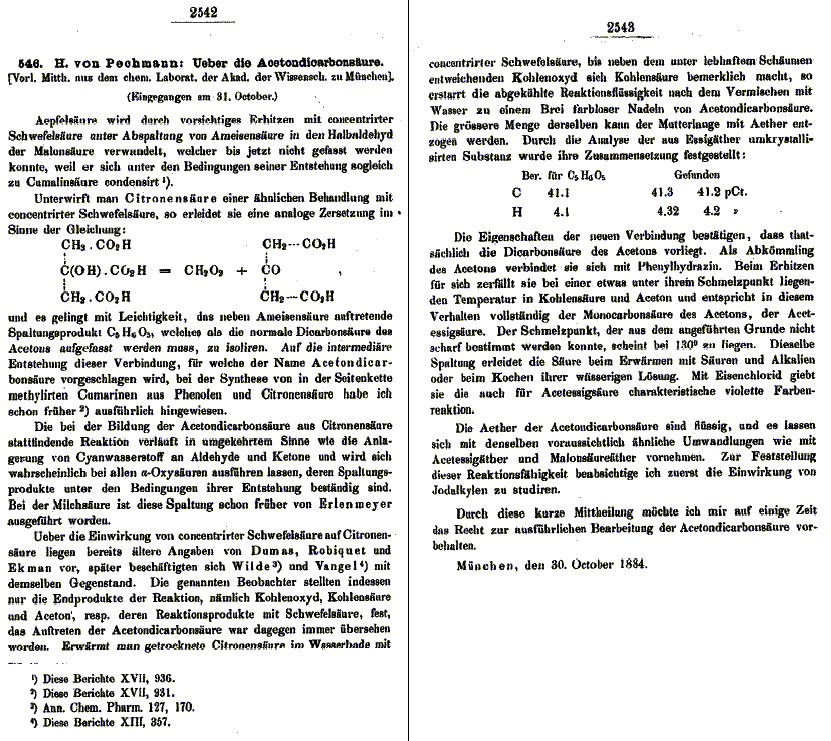Pechmann,
Ber. 17, 2542-43 (1884) Experimental part
Experimental partAnhydrous citric acid is heated with concentrated sulfuric acid on a waterbath until besides the evolution of carbon monoxide a sudden vigorous evolution of carbon dioxide is noted. The reaction mixture is cooled and mixed with water, after which the mixture solidifies to a mass of colorless needles of acetonedicarboxylic acid. The larger quantity of acetonedicarboxylic acid can be extracted from the mother liquor with ether. Its composition was determined by the analysis of the recrystallised compound (from ethyl acetate).
The characteristics of the new compound do confirm the identity of acetonedicarboxylic acid. As a derivative of acetone it reacts with phenylhydrazine.
On heating it decomposes at a temperature somewhat below its melting point into carbon dioxyde and acetone and corresponds in this behavior completely to the monocarboxylic acid of acetone, acetoacetic acid. The melting point, which could not be determined for the aforementioned reason sharply, lies in the neighbourhood of 130°. When acetonedicarboxylic acid is heated with acids or alkalis, or in an aqueous solution, it undergoes the same decomposition. With ferric chloride it gives a violet color which is characteristic for acetoacetic acid.